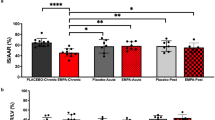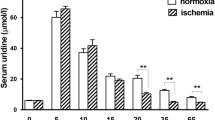Summary.
The microdialysis (MD) technique allows for continuous in vivo monitoring of dynamic changes in the interstitial levels of energy-related metabolites. The release of taurine from the myocyte has been suggested as a marker of ischemic injury. The relationship between (interstitial) taurine release and the degree of myocardial ischemic injury was evaluated following a 40 min long ischemia in a porcine heart-infarct-model. Different protocols of ischemia and reperfusion were used in order to achieve a graded level of myocardial injury. Both interstitial peak levels and the area under curve of taurine obtained during ischemia and reperfusion correlated with the degree of ischemic injury (assessed by developed infarct size estimation). The release of taurine in the myocardium measured by the MD-technique correlated with the degree of ischemic injury during ongoing ischemic insult. Hence, taurine determination in the MD-setting represents a powerful tool to follow the development of myocardial ischemic injury over time.
Similar content being viewed by others
Author information
Authors and Affiliations
Rights and permissions
About this article
Cite this article
Kavianipour, M., Wikström, G., Ronquist, G. et al. Validity of elevated interstitial levels of taurine as a predictor of myocardial ischemic injury. Amino Acids 27, 107–111 (2004). https://doi.org/10.1007/s00726-003-0033-9
Received:
Accepted:
Published:
Issue Date:
DOI: https://doi.org/10.1007/s00726-003-0033-9




